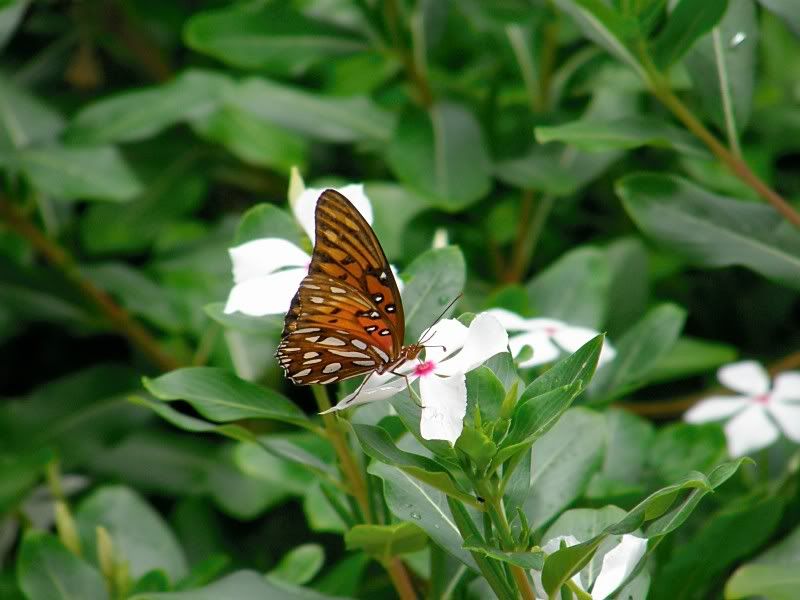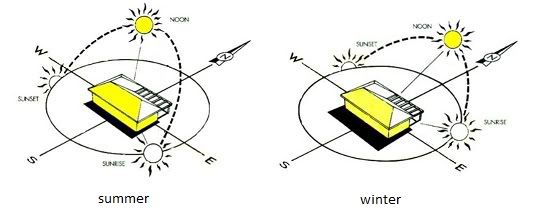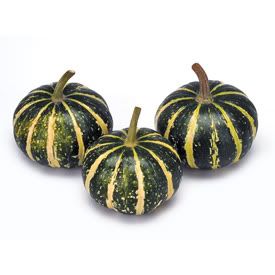Here's another winter migration bird, the Ruby-crowned Kinglet, one of the smallest songbirds in North America. Found this one while I was outside refilling the bird feeders. This one is a female because it lacks the ruby crown. Their breeding habitat is in the forests across Canada, Alaska, and western United States. They then migrate to the southern United States and Mexico. While observing this bird I was hearing this unusual wing flicking sound during flight, and apparently this is common with Kinglets. It was attracted to our American Beautyberry plants which now have gorgeous bright purple berry clusters all over them.
The winter migration is on and we have some company. No it's not my family visiting for the holidays, I'm talking about a small "tournament" of Chipping Sparrows making a buffet out of our fresh bird seed. There's probably about 6 or 7 sparrows in this group I've been seeing almost everyday. Along with the chipping sparrows, we still have the titmice and cardinals.
Florida is experiencing an unusual hard freeze this early in December, which could mean a very cold and damaging winter in the near future. Last night the temps dropped down to 27-29 degrees for a couple hours here. Factor in the wind chill, and they say it feels like 20 degrees outside. BRRRRR! Several plants are still covered with blankets and my container plants are temporarily sitting in the garage. We're suppose to have another hard freeze tonight! That will make 3 freezing nights so far this season and it's only December 14th. I'm hoping we won't have too many garden casualties due to freeze kill. Though I'm sure the garden shops will be very busy in the spring when floridians will have to replace their landscape.
It's been awhile since I've added a photo so here's one I took today of the chipping sparrows. Enjoy! :)
Happy Halloween to everyone! =)
Not much going on in the garden for me so I haven't been posting much. The weather has been extremely dry though, been several weeks since our last good rain. On the positive side, it's been a nice 60 degrees in the evenings so being outdoors at night has been pleasant.
I am starting to notice ALOT of seed pods on flowering plants. I'm collecting seeds from my zinnia's, Asclepias curassavica (tropical milkweed), and Datura metel (double purple devil's trumpet). Interested to check the seed viability next spring when I get ready to plant these varieties again.
This will probably my final post this year on Monarchs as well. I've successfully released 60 Monarch butterflies this year, 35 females and 25 males. I'm most likely done with Monarch raising for the year since it's getting cooler outside, so I'll just start again next spring.
Today marks a milestone in my personal monarch butterfly release. I set free a female and male monarch this afternoon and watched them fly gracefully into some tree cover. The male monarch emerged today and was the 30th successful monarch I've raised this year from caterpillar to butterfly. It's been alot of work, but I'm happy with this accomplishment so far. Proud that I can help the Monarch species, especially if they continue to visit our butterfly garden this year.
The local Monarchs are still laying eggs on the milkweed. The weather is still hot and humid, with a few spotty showers in the late afternoons. There's no shortage of milkweed in our yard either, with about 10 healthy plants providing enough food for the amount of caterpillars I'm rearing.
On another non-gardening note, last night I caught a 3 lb. channel catfish off the St. Johns river bank. It's my personal best so far. =)
August is typically the hottest month of the year in Florida. You can definitly feel the heat and humidity as soon as you step outside. Here's a few pictures from around the garden.
The first picture below is a Passion Flower, passiflora caerulea. This is a host plant for the Gulf Fritillary butterfly (second picture). I have a couple Gulf Frit caterpillars that I'm rearing inside, so I'll have to post another update soon with pictures of them.

Below is my Golden Shrimp plant, Pachystachys lutea. 
I started this Ornamental Pepper from seed in March 2010. It's very easy to grow and it's neat watching the little peppers change colors as they mature. 
And finially, here's an updated photo of my Plumeria I started from seed in August 2009. It hasn't bloomed yet, and probably won't for another year or two. It take 2-3 years from seed to bloom I believe. The Plumeria are native to Mexico and Central America. It is commonly seen in Hawaii for it's beautiful flower landscape. 
We arrived home from vacation on the evening of July 31. What a long drive from Indiana to Florida, at least the kids did well on the roadtrip. When we left, I had to bring 2 Monarch chrysalis that haven't emerged yet. The two female monarchs emerged just fine and were later released in Indiana at my grandparents house. They were immediately attracted to her large purple coneflowers, and one stayed on the flowers for several hours. The photo below was taken from my iphone.
At a rest area along the way in Georgia, we stopped for lunch and found this huge gardner spider in the trees. I've never seen a gardner spider this big, it had to be around 3 inches long.
Here's a photo of my grandmas' eggplant growing nicely from a topsy turvey. 
While visiting one of the grandparents in Indiana, a stray kitten came running to us wanting all sorts of attention. My sister (who is a sucker for homeless cats lol) brought it home with her of course. For being an outdoor cat, the kitten was litter trained quickly and slept most of the way home in the car. The kitten was appropriately named Indy. 
I will be leaving on vacation in a couple days from July 22 - July 30, going to Indiana to pickup my son and visit family. In the meantime, I'm trying to finish up my remaining Monarchs, there are 12 chrysalis left. I purchased a 24" high net castle enclosure from LiveMonarch.org, a not-for-profit foundation in Florida. They also have a professional sanitizing spray that actively kills all bacteria, mold, mildew, single cell organisms, and even viruses. If your ready to raise a bunch of caterpillars, these are essential products to own.
Here are some interesting resources about rearing Monarchs:
Live Monarch - Free Milkweed Seed / Rearing Supplies
http://www.livemonarch.org/
Monarch Watch - Forum and Online Store
http://www.monarchwatch.org/
Monarch Butterfly Migration Tracking Project
http://www.learner.org/jnorth/monarch/
Gardenweb Butterfly Garden Message Board
http://forums.gardenweb.com/forums/butterfly/
We have two Nicotiana plants, also known as flowering tobacco, being raided by the tobacco hornworm. Want to know how to tell the difference between a Tobacco Hornworm and Tomato Hornworm?
The tobacco hornworm is generally green with seven diagonal white lines on the sides and a curved red horn. The tomato hornworms have eight V-shaped marks on each side and their horn is straighter and blue-black in color. These hornworms are the larvae of hawk or sphinx moths.
The plants were cutback today to promote new growth and I'll probably spray later this evening with Southern Agriculture Thuricide, a product that contains Bacillus thuringiensis (BT). I used BT a month ago and with one treatment it worked very well to get rid of the caterpillars. The trick is to spray in the evening because BT degrades quickly in sunlight.
Found (2) more Monarch eggs outside so now a total of 9 caterpillars I'm caring for. One formed a chrysalis last night and will be emerging in 9-10 days. Here's some fun facts about the Monarch butterfly!
- The milkweed plant is the only thing the larvae will eat. Did you know that milkweed plants are being cut down to make roads and houses and the monarch butterfly population is decreasing because of this?
- Eastern populations winter in Florida, coastal areas of Texas, and Mexico. They return to the north in spring. Monarch butterflies follow the same migration patterns every year.
- Not all monarchs migrate back north. It appears that the monarchs that migrate to Florida may just stay there, making this population what is known as a “sink population".
- Did you know that monarch butterflies are poisonous? They won’t harm humans, but the chemicals from the milkweed plant that they eat when they are in the larvae stage builds up inside of them and gives them a poisonous defense against predators like frogs, birds, mice and lizards.
- Did you know that monarch butterflies go through four generations each year? The first three generations hatch from their cocoon state (also known as the pupa or chrysalis state) and live for up to six weeks, but the fourth generation continues to live on for up to six or eight months so that they can migrate to a warmer climate, hibernate, and then start a new first generation in the spring time.
Here's my video I wanted to share of the Monarch Butterfly I raised. The papertowel it's walking on is soaked with sugar-water. I only kept it for a couple days as I wanted to release it outside so it could continue it's natural cycle.
It only took a couple days for the Monarch caterpillar to form a chrysalis on June 5th. Then just 9 days later, a new Monarch butterfly emerged from the chrysalis. To feed to butterfly, I made a sugar-water solution and soaked a piece of papertowel. After a few days of enjoying the butterfly, it was released so it could continue it's lifecycle. Below are pictures of the Monarch chrysalis and butterfly feeding off of the papertowel.
During the past week or so, I've been finding more and more Monarch eggs and tiny caterpillars on our Milkweed plants. I also noticed alot of them disappearing after a few days, which I think is caused from their natural predators like spiders, wasps, and lizards. It's not uncommon for less than 10% of them to survive. So in an effort to help out the Monarch population, I collected some more eggs so I can hatch and raise them to an adult butterfly. Right now I have 7 caterpillars. Three of them just hatched today. The Monarch caterpillar cycle only takes about 2 weeks so it's amazing to watch how fast they grow in a single day. The last picture posted here is one I took of a Monarch laying an egg on the underside of a leaf. I was just planting some more Milkweed plants one day and this Monarch was flying around me the whole time. 


Today I found a gorgeous Monarch caterpillar chewing on our Butterfly Weed plant. First time I've seen one of these caterpillars in our garden because they are only attracted to Milkweed. The Butterfly weed I found it on was just purchased this year. I'll raise this one and post updates. He's already pretty large so it shouldn't take too long before it forms a chrysalis. Once it forms a chrysalis, it's only about 10 days before an adult Monarch butterfly emerges. Most adult Monarch butterflies can live from 2 to 6 weeks! I took this picture below to show you the size and stunning color of this eye catching caterpillar. Simply amazing
It's officially hurricane season now! Suppose to be a busier than usual season according to predictions. The June 2 predictions are released and estimates are higher than before.
ATLANTIC BASIN SEASONAL HURRICANE FORECAST FOR 2010
Issue Date 9 December 2009
Named Storms: 11-16
Hurricanes: 6-8
Major Hurricanes: 3-5
Issue Date 7 April 2010
Named Storms: 15
Hurricanes: 8
Major Hurricanes: 4
Issue Date 2 June 2010
Named Storms: 18
Hurricanes: 10
Major Hurricanes: 5
Hibiscus (spider mites) - Today I noticed several yellowing leaves on a hibiscus plant that was otherwise doing very well. To make sure, I inspected the underside of the leaves closely and found a few spider mites. Good thing I looked! The infestation isn't very big, but I want to "shock and awe" them to prevent a larger problem like last year. Last year was horrible, the infestation was so bad, the hibiscus plants were practically sticks because all the leaves fell off. Well that was last year, so this year I'm bringing out the big guns, Forbid 4F. Last year I purchased a small 5ml bottle of Forbid 4F on eBay and this is the first time I have a chance to use it. It's a highly recommended product that offers knockdown and residual control of all kinds of mites and whiteflies. I guess the boy scout in me always wants to be prepared. =)
Nicotiana (caterpillars) - Another round of inspection led me to the Nicotiana plants, which haven't been blooming for awhile. I immediately knew something was wrong when I noticed small feces all over the leaves and blooms hollowed out. It only took a few minutes to find many caterpillars all over the plants, mostly at the tips of new growth. Not sure what species of caterpillar they are. They were eating the inside of flower buds mostly. A quick trip to Home Depot and I purchased some Southern Agriculture Thuricide, it's a product that contains Bacillus thuringiensis (BT). BT does not kill on contact, but rather must be eaten by the caterpillar to be effective. After a day or two, the caterpillar stops eating and dies. BT cannot be applied during daytime hours as it degrades rather quickly in direct sunlight, so applying in the late evening is best. BT is also safe for beneficial insects, birds, and animals.
The Zucchini 'Squash Contender' I planted in a large container was not successful. The leaves were not growing very big, maybe a couple inches, and growth seemed to be stunted. The container itself (light teal colored plastic) was very hot to the touch with direct sunlight. Also after discarding the plants and all the soil, the bottom of the container soil was very wet. This is a common problem with container grown plants in the Florida heat and humidity. When excess moisture remains in the bottom of your containers, it's called the Perched Water Table. Basically the soil is always saturated and will not drain from the bottom.
So I'm making a few adjustments. First, I spray painted the container a flat white to reflect light and reduce heat within the soil. Remember, the darker the container color, the more heat it will absorb. Second, by sitting the container on a couple 2x4's raises it a couple inches off the ground improving air flow as well. Keeping the soil cool is key for optimal root growth and plant strength. And finially, I'm using cut nylon strands from a mop as a wicking system. This nylon material absorbs moisture easily and will wick excess moisture out of the container. I used (6) 14" long nylon strands, with 7" inside the container and the remaining 7" laying on the ground outside the container. The idea is for sunlight to evaporate moisture from the nylon strands as it wicks moisture out from underneath the container.
Growth has been pretty fast, with only a few minor issues with pests. Had a few aphids attacking an Ornamental Pepper seedling but I took them out with a soapy spray. Also had some thrips attacking Hibiscus bloooms, Plumeria leaves, and Zinnia. They were causing hibiscus blooms to drop prematurely. I took care of this with a couple treatments of Green Light Spinosad spray and now they're gone. Here's a photo gallery of pictures I took today around the garden...
A Mothers Day Lily for someone special
Hibiscus with double blooms
Datura metel 'Purple Trumpet' 
Gator Magic, Dancing Fire, and Cosmic Dancer hibiscus
Ornamental pepper seedling
Cody's workshop from Lowe's & HomeDepot
Cody's bird feeder he made @ Lowe's. The doves love it!
Alot of photos to share today! Enjoy =)
New blooms from the Pansies I started from seed...
Alyssum 'Snow Crystals' and Petunia 'Celebrity Red Morn' started from seed..
New landscape statue purchased last weekend at Lowe's. Cute!
At Lowe's Build & Grow, Cody made this See It Grow planter for Earth Day. Planted a couple nasturtium seeds to watch them grow from top to bottom.
Newly planted Hibiscus (purchased at Lowe's) bloomed today.
PROCEED WITH CAUTION: BEE'S AT WORK
Newly planted Squash Contender zucchini...
Tropical Hibiscus and Plumeria started from seed last year...
Datura metel 'Purple Trumpet'
Over-wintered potted Hibiscus recovering and growing new leaves
Quick update on some flowers/veggies I'm growing from seed.
Dates are when I sowed seeds for germinating. Used my Burpee Ultimate Seed Starting system for the Marigold, Vinca, Zinnia, Coleus, and Aster Hulk. Everything has germinated so far except for the sunflowers, but they were planted only 3 days ago.
3/08/10 Ornamental Pepper 'Sangria Hybrid'
4/02/10 Squash Contender Hybrid (zucchini) in a large container
4/05/10 Marigold 'Snowball Hybrid'
4/05/10 Vinca 'Pacifica Burgundy Halo'
4/05/10 Zinnia 'Zahara Starlight Rose'
4/05/10 Coleus Wizard Mix
4/05/10 Aster Hulk
4/15/10 Sunflower Large Flowered Mix from ParkSeed Co.
Harvest photo from a few of my container grown radish.
Nice round shape, bright color, and no cracks. 
After about two months, the radish are about ready to harvest. Two months is a long time for radish, but I think the slow growth is due to the lack of sunlight that I get during the winter season. In the winter months, much less sunlight reaches our backyard due to the low angle of sunlight hitting some large oak trees. However in the spring/summer time, the angle of the sun is much higher in the sky, allowing sunlight to bypass over the trees. The diagram below shows the high angle of the sun in summer and the low angle in winter. 
GARDEN PEST UPDATE: I found my Datura 'Double Purple' and Brugmansia 'Charles Grimaldi' angel trumpets are being attacked by aphids. I'm treating both by spraying with Safer Insecticidal Soap. This causes dehydration of the soft bodied insects such as aphids.
I stopped by Lowes yesterday and browsed their plants, which looked really good. They had several varieties of pepper and tomato as usual. I purchased a Husky Cherry Red tomato plant. These hybrid tomatoes only get 1" wide, the perfect bite size tomato. Also purchased a Yummy Bell Petite bell pepper plant. First time growing both varieties. Both plants will be potted in 5 gallon containers with Jungle Growth Flower & Vegetable soil mix. 
The next thing I wanted to talk about is fertilizer. Dyna Gro makes some great fertilizers that are hard to find, I had to purchase mine from Amazon and eBay. Dyna Gro contains all essential trace elements not commonly found in most commercial fertilizers like Miracle-Gro. Products like Miracle-Gro can also burn the roots of your plants from excess salt, however, this is not the case with Dyna Gro. So I'm switching my fertilizer brand this year. I got some Dyna Gro Liquid Grow (7-9-5) for my veggies and some Dyna Gro Foliage Pro (9-3-6) for my flowers. From my research, this brand is HIGHLY recommended.
And finially, I wanted to share some pictures of a few plants I had success over-wintering through one of the coldest winters in Florida history. These container plants were started from seed around July/August 2009. Enjoy!
Stavros Italian Peppercini
Datura metel "Double Purple" Trumpet
Received a new email from Park Seed today with a limited time promotion. They are offering Free Standard Shipping on all seed orders this weekend (3 days only). Promotion code is: SAVEGREEN
I couldn't resist so I purchased the following seed for this year. The pinstriped fruit on the Gourd Zebra grow only 4" wide, which should make a nice compact ornamental gourd. Impressive color varieties shown on the Large Sunflower mix which grow from 6-10 feet tall. And I'm a huge fan of fried zucchini, so I purchased the Squash Contender which is high yielding and has rich flavor. These spineless zukes grow 8-9 inches long too!
Gourd Zebra
Aster Hulk
Sunflower Large Flowered Mix
Squash Contender Hybrid
The photos below are not actual pictures I took, just examples.



In November, I planted some Radish Cherriette Hybrid seed in a container, but some heavy rains drowned the soil too much causing stress and very slow growth. Then the recent freezing weather was the final knockout punch that killed them all.
So today I planted radish seed again in the same container, this time taking caution when it's suppose to rain. Basically I'll have to move the container away from heavy rains to control the moisture level. Too little or too much water are common mistakes you want to avoid for any container plant.
Lately we've had a couple artic blasts coming through causing a long stretch of freezing weather here in Central Florida, which is unusual for our zone. I took some pictures below of some ice hanging from a Sago palm tree in our backyard and a plate of frozen water I removed from our bird bath. In fact, today some parts of Florida had actually seen snow flurries! Some Florida residents were making mini-snowman's with the winter surprise from the sky. I wasn't lucky enough to get any snow at my house though. I'm not sure if that's good or bad. LOL
The low temperature tonight is suppose to be 26°F in my area, the coldest so far. We are covering our tropical plants to prevent freeze damage which can kill palm trees and delicate perennials. Hopefully most of the plants will survive this cold snap but it's not likely everything will make it. Here's some photo's...

Just a quick update on the birds. The male/female pair of Cardinals, about 3 Tufted Titmice and at least 2 Doves still remain in the area. They stop by to feed just about everyday. Since it's been cold outside, I've been keeping a close-eye on the feeders, refilling with more seed if needed so the wildlife can survive the cold nights. Also I wanted to show you all a great video I recorded today of a Tufted Titmouse picking at a sunflower seed.

